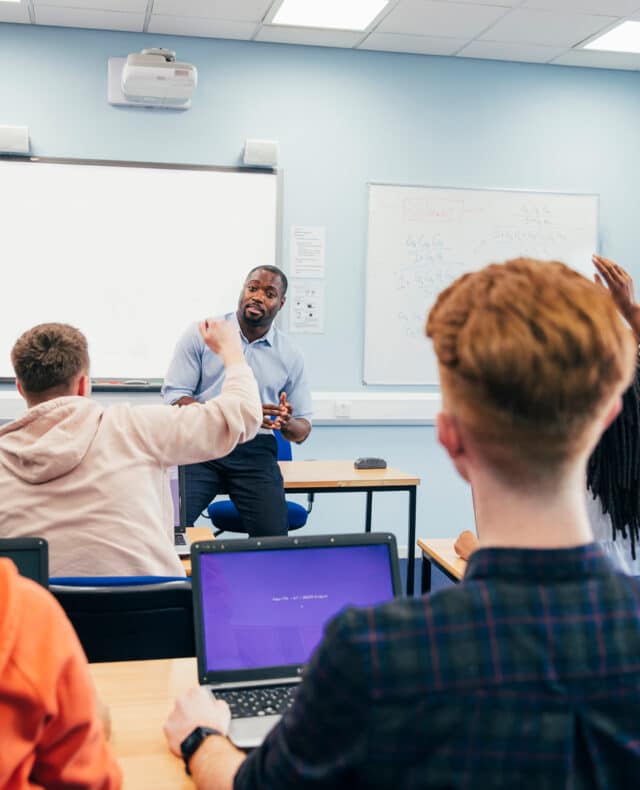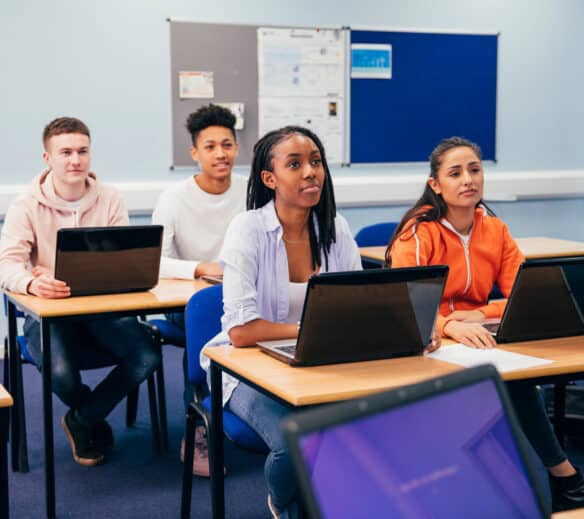
Eleanor Milner
Media Assistant
February 7, 2023
Tuesday 7th February is Safer Internet Day, a date that encourages people globally to join forces ‘together for a better internet’. What started as an initiative of the EU Safe Borders project in 2004, has grown beyond its traditional geographic zone and is now celebrated in approximately 180 countries worldwide.
From cyberbullying to social networking, each year the day focuses on raising awareness on the current and emerging concerns online. This year, the theme is ‘Want to talk about it? Making space for conversations about life online’, with a particular focus on young people.

Why is it important?
The internet plays a huge part in everyone’s life, particularly young people. Whether that be through video games or posting on social media, the internet has numerous benefits for young people. However, internet use amongst young people has been linked to various issues such as low self-esteem and anxiety.
This Safer Internet Day, the aim is to help educators and parents to promote better wellbeing for young people online and gain a better understanding of the risks.
Creating a positive online environment
Learning how social media works and leading by example is a great way to demonstrate how young people can make their own online spaces safer. For instance, showing children how to keep up-to-date with their privacy settings, teaching them to think about what they’re posting and the consequences this may have. Encouraging them to discuss and talk about what they see online and how this makes them feel, talking about online boundaries and why these are important. All these conversations can encourage young people to be more open about their experiences online.


How to identify reliable content
What is a credible source? This is content free from bias and backed up with evidence, and written by a trustworthy author or organisation. With so much information out there it can be hard to tell what is trustworthy and what is not. With young people being particularly impressionable, it is important are able to recognise what they can trust online.
The CRAAP test is a catchy acronym that helps evaluate whether a source is credible. This stands for …
- Currency: Is the source up to date?
- Relevance: Is the source relevant to your research?
- Authority: Where is the source published and who is the author?
- Accuracy: Is the source supported by evidence?
- Purchase: What was the motivation behind publishing this?
Role of Parents, Carers, and Educators
Understanding the risks young people face online can create more helpful and powerful conversations. Understanding the risks and dangers they could face can help you understand how they may be feeling.
Consider who they might speak to online, what types of conversations might they be having, or whether are they talking to people they don’t know. Also consider how they might be inclined to behave online and how this makes them feel. The NSPCC has a great range of tips, resources, and advice on having helpful conversations about young people’s online safety.


Empowering Young People
Although there are many threats online, highlighting the positives of what young people can achieve online can help empower them to use their digital space for good.
Likewise, showing young people how to handle their own online safety can help them feel confident in their own decisions. This could be as simple as encouraging young people to support each other online, or by showing them how to learn new skills or research a new hobby. Teaching young people how to use the digital world to inspire them can help give them the power to create a better space for themselves and their peers.
To find out more, please visit the Safer Internet Day, where you can find a range of useful resources for both adults and young people.




